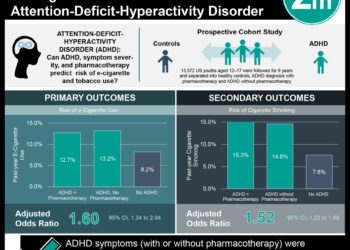Number of lives saved due to tobacco control continues to rise
Image: PD/ Stanford. Vintage Smoking ad, 1949
1. Since 1964, tobacco control methods have resulted in 8.0 million premature smoking deaths being avoided, 4.4 million of which would have occurred before age 65.
2. Tobacco control methods have resulted in an increase of life expectancy for both men and women after age 40.
Evidence Rating Level: 2 (Good)
Study Rundown: The US Surgeon General’s first report on Smoking and Health was issued in 1964. Tobacco control efforts since then have been building on this foundation. Such efforts include increasing public awareness, large increases in the taxation of cigarettes, and limiting freedom to use cigarettes in public places. While it is commonly known that tobacco rates have dropped since the 1960’s in large part due to these tobacco control methods, the number of lives saved due specifically to such control methods has not been quantified.
The authors of this study set out to expand on the Cancer Intervention and Surveillance Modeling Network (CISNET) project which estimated the number of lung cancer deaths avoided between 1975-2000 as a result of tobacco control. The current study is strengthened by the author’s expanding CISNET to cover the years 1964- 2012 and include all deaths as opposed to only those due to lung cancer. This study is limited by its use of mortality relative risks from 1999, which have been shown to be underestimating the actual relative risk of current smokers and hence lives saved. Future research should focus on the health impact of less familiar trends in tobacco consumption such as e-cigarettes, hookah, and chewing tobacco.
Click to read the study in JAMA
Relevant Reading: Impact of Reduced Tobacco Smoking on Lung Cancer Mortality in the United States During 1975–2000
In-Depth [retrospective cohort]: This retrospective cohort study of the US population resulted in an estimated reduction of 8.0 million (credible range [CR], 7.4-8.3 million) premature smoking attributable deaths that were associated with tobacco control in 1964-2012 (5.3 million [CR, 4.8-5.5 million] men and 2.7 million [CR, 2.5-2.7 million] women). 4.4 million of these [CR, 3.8-4.7 million], occurred before age 65. Further, tobacco control appears to be associated with 1.6 years (CR, 1.4-1.7) of improvement in life expectancy for women or 29% (CR, 25%-32%) of the gain. For men, 2.3 years (CR, 1.8-2.5) or 30% (CR, 23%-32%) of improved life expectancy for men is projected to be associated with tobacco control.
By John Prendergass and Brittany Hasty
More from this author: Reducing surgical complications may increase costs, Protected sleep periods improve intern alertness and sleep duration, ADHD medication decreases rates of criminality in ADHD patients, Low dose aspirin shows net clinical benefit in patients with first unprovoked venous thromboembolism, Rare TREM-2 mutation implicated in Alzheimer’s Disease
©2012-2014 2minutemedicine.com. All rights reserved. No works may be reproduced without expressed written consent from 2minutemedicine.com. Disclaimer: We present factual information directly from peer reviewed medical journals. No post should be construed as medical advice and is not intended as such by the authors, editors, staff or by 2minutemedicine.com. PLEASE SEE A HEALTHCARE PROVIDER IN YOUR AREA IF YOU SEEK MEDICAL ADVICE OF ANY SORT.





